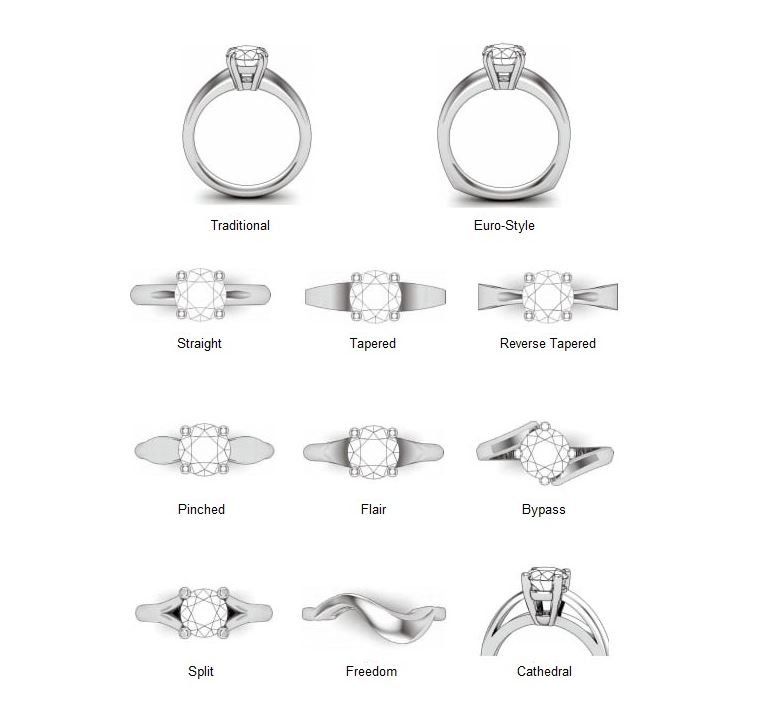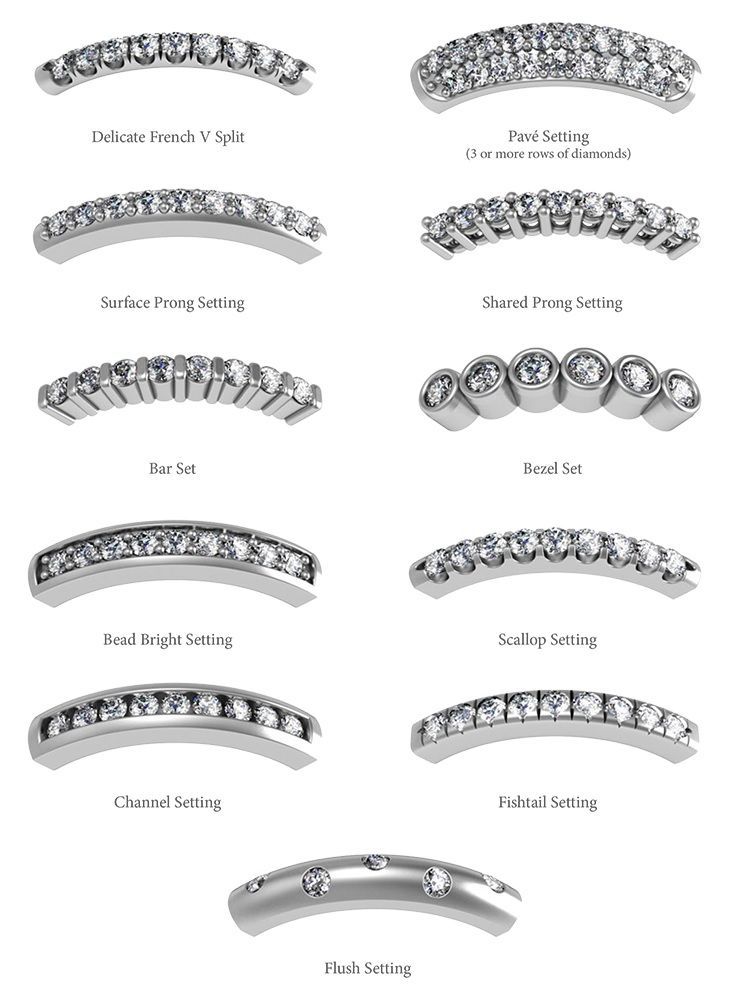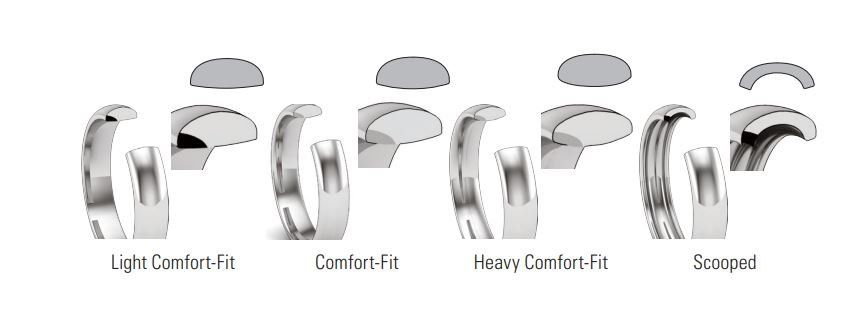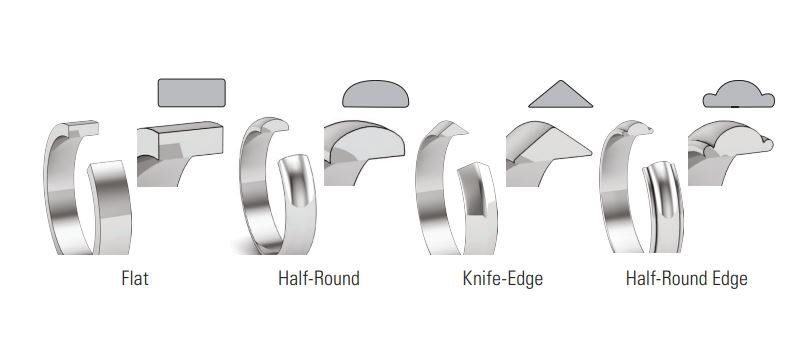Styles and Profiles of Ring Shanks
There are a variety of styles and profiles to choose from when it comes to the shank—the part of the ring that wraps around your finger. The two most common shank styles are Traditional and Euro-Style. When designing your ring, it’s important to consider and discuss the desired width, depth, profile, and inside fit of the shank.
The shank can have a uniform thickness all the way around, or it can be slightly thicker near the top, closer to the setting. The areas on either side of the center stone—typically around the 10 o’clock and 2 o’clock positions—are called the
shoulders of the ring. Depending on the design, the shoulders can take on different forms, such as tapered, flared, split, bypass, cathedral, or freeform, as illustrated below.

Setting Styles on the Shank/Band
Below are some of the common ways stones can be set into the shank of a ring. The most traditional style is a prong or bead setting, but the overall look and how the stones sit can vary depending on the setting style you choose. For example, if you want the stones to sit flush with the band, a channel or flush setting would be more appropriate. If you’re aiming for extra sparkle, a pavé setting is a great option.
Keep in mind that the more complex the shank design, the more potential there is for future maintenance. More stones and prongs mean more small parts that may eventually need repair. Sizing is another important consideration. For instance, we generally do not recommend resizing a Euro shank, as doing so can distort the shape and overall appearance of the ring.
A helpful rule of thumb: If stones are set halfway or more down the shank, it can make future sizing more difficult or even impossible. Simple designs—like solitaires or rings with 3 to 7 stones—are usually easier to resize, depending on the setting. However, we do not recommend resizing any ring more than one full size up or down, as this can compromise the integrity of the piece.

Ring Shank Profiles
The ring shank will have a shape or profile that is most often just to the shoulders of the ring. Sometimes it will go the full circle of the ring. The most popular and well known ring shank profiles are "Standard/Half Round Fit, and Comfort Fit, the difference between a standard fit ring and a comfort fit ring is the shape of the inside edge. A standard fit ring has a flat, inner surface, which fits snugly against your finger. A comfort fit ring has a slightly curved inside edge, which allows it to slip on and off more smoothly. There are different levels of a comfort fit ring as shown below.



